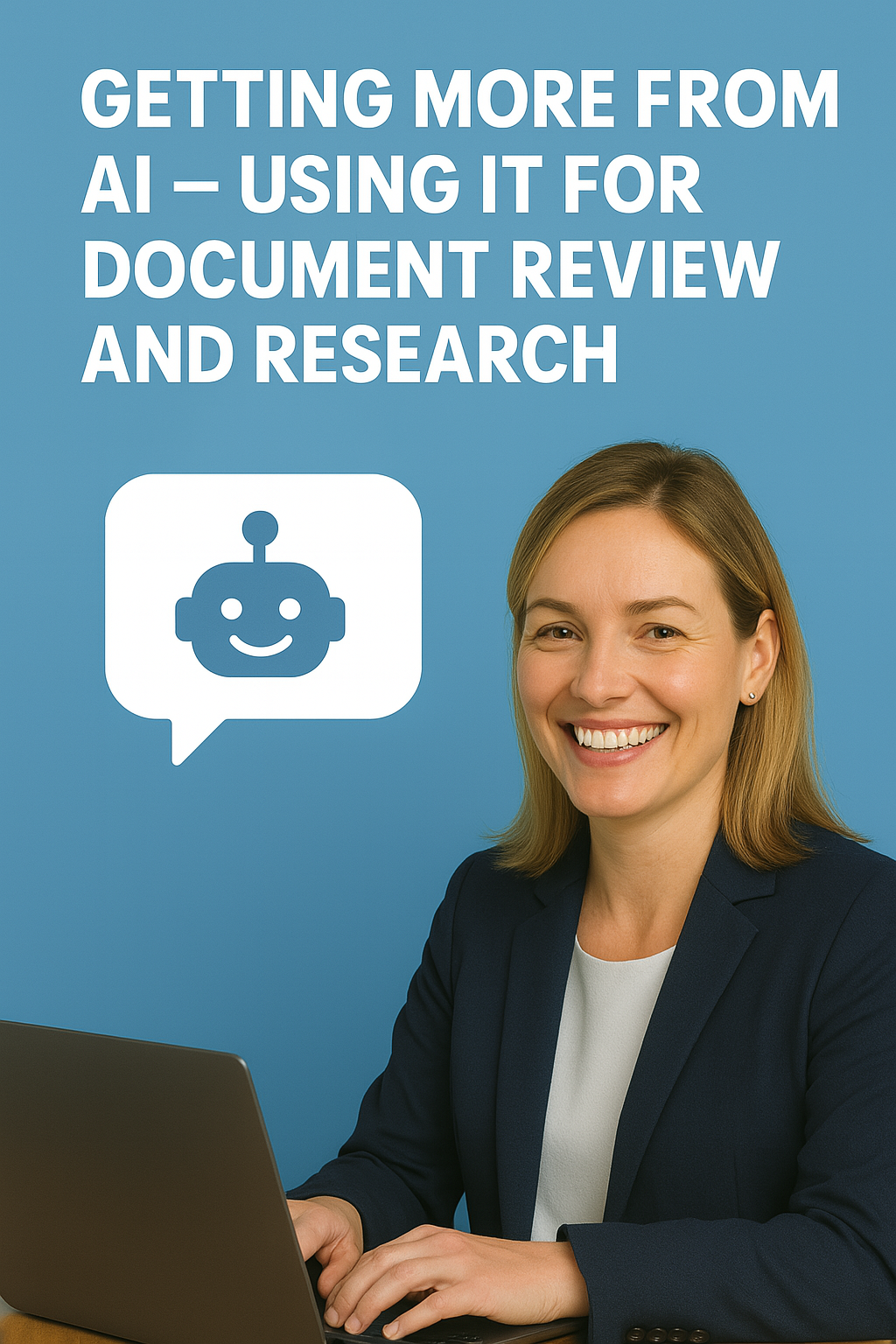By now, you’ve likely asked your first few questions using AI. Maybe it explained a legal concept or helped outline the elements of a claim. That’s a great start. Now, let’s go deeper.
In this second part of our guide, we’ll explore how AI can support lawyers with document-heavy tasks and research needs—without crossing ethical lines. Think of it as giving your AI assistant a bit more responsibility, while still keeping a close supervisory eye.
If you missed part 1 you can read it here: AI for Lawyers: A Practical Guide to Getting Started – Part 1
For our examples, we have been using Open AI, Chat GPT.
The Right Documents to Upload (And What to Avoid)
You can use AI tools like ChatGPT to summarize, outline, or extract information from documents. But only upload non-confidential materials—think redacted contracts, court opinions, or sample pleadings.
Do NOT upload: client memos, sensitive case documents, or anything privileged. AI tools are not secure storage spaces.
Step-by-Step: Using AI for Document Review
Here’s how to get started:
- Prepare your document. Remove client names and sensitive data. A safe bet is to use public or fictional examples.
- Paste the content or upload if the tool allows. (ChatGPT, for instance, supports uploads with the Plus version.)
- Ask for a summary or key points.
-
- “Summarize this contract in plain English.”
- “What are the key obligations of each party?”
- “Identify any unusual clauses or red flags.”
You can also ask AI to compare two documents:
- “How does this lease differ from a standard commercial lease?”
Legal Research Lite
AI isn’t Westlaw or Lexis—and it doesn’t claim to be. But it can:
- Help brainstorm search terms or legal angles
- Summarize public case law
- Generate outlines for memos or briefs
Try prompts like:
- “Give me a summary of the leading ADA reasonable accommodation cases.”
- “What are possible defenses to a breach of fiduciary duty claim under Delaware law?”
Drafting Assistance
You can also experiment with:
- First drafts of client letters or internal memos
- Outlines for arguments or deposition questions
- Plain language translations for client education
AI won’t replace a polished legal draft—but it can shorten the path to one.
Final Cautions
- Double-check everything. Treat AI as a brainstorming partner, not a source of truth.
- Cite carefully. AI sometimes generates non-existent cases (known as hallucinations).
- Stay ethical. ABA guidance is evolving, but confidentiality and competence remain core.
Coming Next: Using AI for Legal Strategy and Complex Analysis
In the final part of this series, we’ll look at how to ask AI more nuanced questions—like case strategy, likelihood of success, and advanced hypothetical analysis—while keeping human judgment firmly in the driver’s seat.
AI is ready to handle more than just trivia. With the right guardrails, it can be a powerful second chair.


